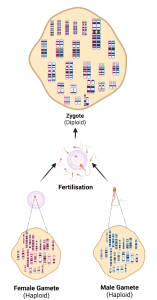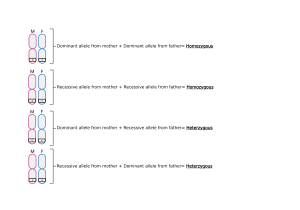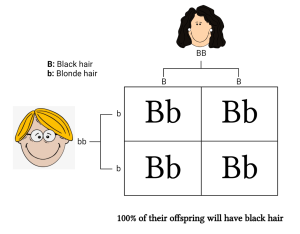What do I inherit from my parents?
Eni Olabode
Have you ever wondered why you look so similar to your parents? Or why you have the same hair colour as your mum but not your dad?
Well, this can be explained by inheritance!
What is Inheritance?
 Genetic Inheritance or Heredity is the process where genetic information from parents is passed down to their children. To explain how genetic information is passed on, we need to go back to the process of fertilisation.
Genetic Inheritance or Heredity is the process where genetic information from parents is passed down to their children. To explain how genetic information is passed on, we need to go back to the process of fertilisation.
Fertilisation occurs when the nucleus of a sperm cell is fused with the nucleus of an egg cell forming a zygote. The sperm and egg cells are called haploid cells as they contain 23 chromosomes. In contrast, somatic (body) cells contain two sets of 23 chromosomes and are referred to as diploid cells. This means in the fertilised egg, the developing cells will contain 23 chromosomes (the genetic material) from each parent making a total of 46 chromosomes.
Within these chromosomes are the instructions which determine our traits/characteristics. For example if we will have brown eyes or blue eyes.
Inherited VS Acquired Traits
Genetic material within chromosomes passed down from our parents give rise to inherited traits. On the other hand, acquired traits are not passed down from parents to children. Acquired traits arise as a result of environmental factors.
Below in the table are examples of traits that are inherited and those that are acquired.

Traits like intelligence are suggested to be both inherited AND acquired.
Predicting the traits in offspring
As we inherit two copies of genetic material/chromosomes from our mothers and fathers, this means for any given gene we will have two copies.
Each of the alternative versions of a gene is called an allele. Alleles can be recessive or dominant: recessive alleles are noted with a lowercase letter (e.g., e) and dominant alleles are noted with a capital letter (e.g., E).
Let’s have a look at the different allele combinations that can occur:

Using this information scientists have worked out traits can be recessive or dominant. A recessive trait will only be expressed if the offspring has two copies of the recessive allele coding for the trait. Whilst for a dominant trait to be be expressed only one dominant allele is needed.
So, what does this mean?
This means if scientist know traits like having black hair is dominantly expressed, they can predict that if a mother has black hair and the father has blonde hair (recessively expressed) the offspring’s hair colour will be black. They do this by using Punnet squares, an example of a Punnet square is below.

There is still a lot to learn about heritance and more importantly the effect it has on disease development. As traits can be passed on to offsprings, diseases can also be passed on. Having a better understanding of this can ultimately assist in the search for more effective treatments.
